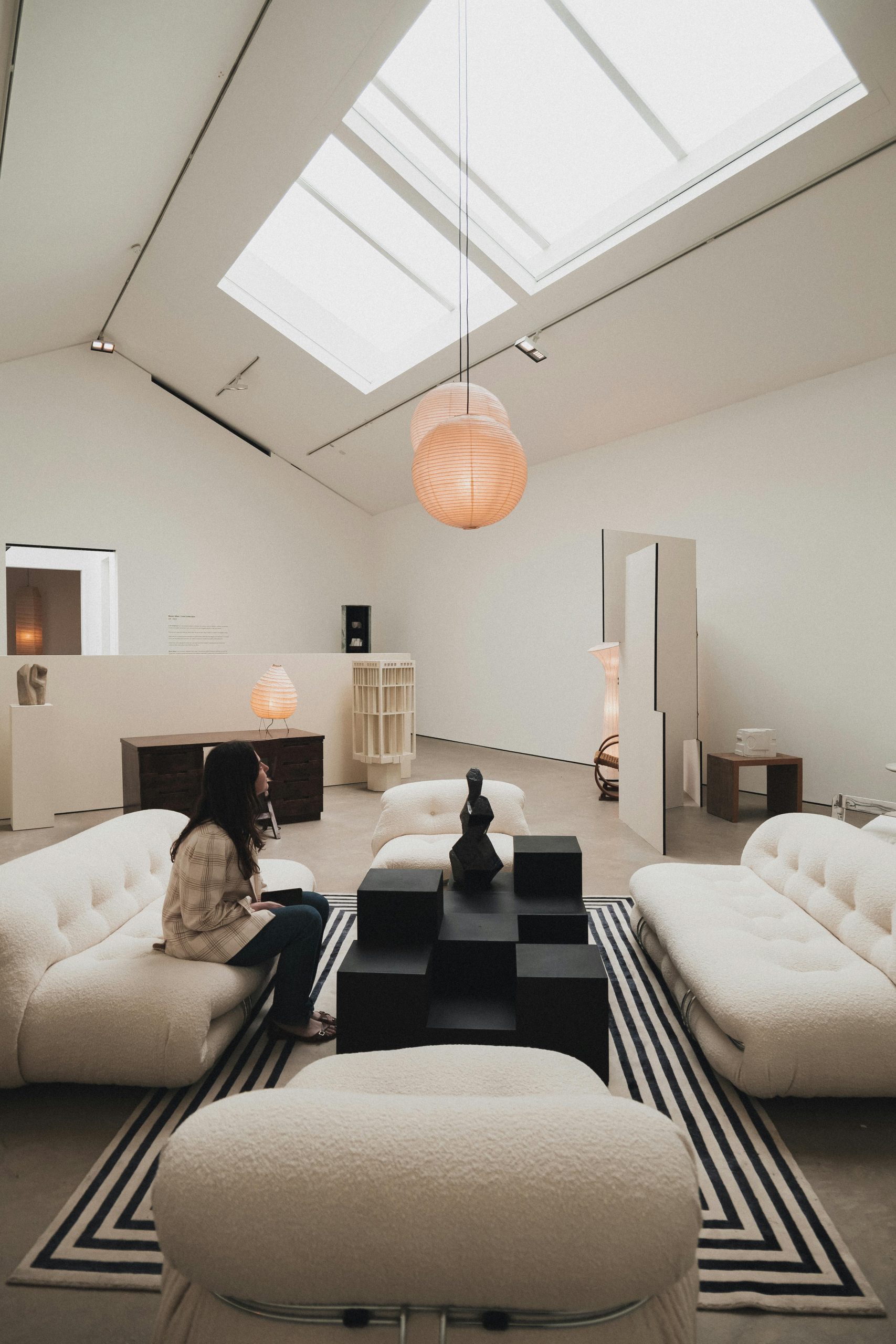Polycarbonate rooflights brighten interiors with durable, lightweight panels that combine practicality and style. Offering UV resistance and impact strength, they suit diverse spaces from homes to commercial buildings while reducing energy costs. Choosing the right shape and secure installation enhances natural light and comfort, making polycarbonate an affordable, versatile alternative to traditional glass rooflights.
Comprehensive Overview of Polycarbonate Rooflights
Durable Polycarbonate Rooflights stand out as a practical and innovative roofing option, merging strength, versatility, and cost-effectiveness. Recognized for their lightweight profile and impact resistance, they are increasingly preferred for both residential and commercial projects. These features address common concerns such as fragility and heavy installation costs issues often associated with glass alternatives.
Also to read : What Innovations in UK Business Services Will Shape the Future?
The importance of UV protection and thermal performance cannot be overstated. Modern polycarbonate rooflights incorporate advanced coatings that inhibit UV rays, preventing interior fading while maintaining transparency. Their thermal properties help lower energy bills by reducing heat transfer, creating more comfortable indoor environments. Exploring different types and styles reveals a wide array of options:
- Flat rooflights offer a sleek, minimalist look, ideal for contemporary designs.
- Dome-shaped and pyramid rooflights diffuse light evenly, creating a natural brightness in interior spaces.
- Barrel vault designs mimic traditional roofing styles, blending architectural appeal with daylight benefits.
These varieties cater to diverse architectural needs, offering solutions that range from enhancing natural light to improving energy efficiency. Employees, homeowners, and builders benefit from the resilience and versatility that Durable Polycarbonate Rooflights provide, especially in environments exposed to harsh weather. Their impact resistance, combined with OS measures like UV filters and insulation options, makes them a sustainable choice for long-term durability.
This might interest you : How Can UK Business Services Help Companies Adapt to a Post-Pandemic World?
Their popularity continues to grow, thanks to features such as easy installation, affordability, and minimal maintenance requirements. They represent a resilient, visually appealing, and efficient roofing solution capable of transforming spaces while standing up to environmental challenges.
Advantages and Key Features of Polycarbonate Rooflights
Impact Resistance and Durability
Polycarbonate rooflights benefits start with their outstanding ability to withstand high impacts and harsh conditions. Used in both residential and commercial rooflight designs, these panels surpass traditional glass in impact strength, making them the go-to for impact resistant roof glazing. Polycarbonate dome glazing and flat roof suitable skylights offer a reliable barrier against weather extremes and accidental impacts such as hail, fallen branches, or even attempts at forced entry.
A lightweight roofing solution, polycarbonate saves on structural load without compromising on durability. Unlike glass, which may shatter or crack under force, polycarbonate rooflights are engineered to resist breakage, offering long-lasting protection in various climates. This robustness, paired with the advanced manufacturing of double skin polycarbonate panels and triple skin insulation glazing, provides not only enduring strength but also peace of mind for users looking for durable roof glazing options.
Thermal Performance and Energy Savings
The thermal performance of polycarbonate panels is a core advantage, especially for those seeking energy efficient roof glazing. Insulated rooflight panels are available in both double and triple glazed roof windows, helping to trap warmth in winter and reduce overheating in summer. This performance translates directly into energy saving skylight designs that can lower heating and cooling costs across all types of rooflights, contributing to more sustainable construction materials.
Polycarbonate rooflights benefits extend into enhancing the building envelope. Options such as triple skin insulation glazing and Kingspan rooflight systems are tailored for either flat roofs or unique roof shapes such as barrel vault roof glazing and pyramid shaped rooflights. Their design minimizes heat loss, supporting cost-effective roofing solutions and aligning with goals for energy efficient home improvements. The use of clear glazing for natural light ensures interiors remain bright, reducing reliance on artificial lighting and increasing energy savings.
UV Protection and Longevity
Another clear benefit of polycarbonate rooflights is their built-in UV protected roofing panels. Sunlight, while important for daylighting benefits, can degrade materials and fade interiors over time. Polycarbonate dome glazing comes equipped with advanced UV filtering glazing benefits, protecting against both the fading of furnishings and the panel’s own yellowing or brittleness.
This UV resistance is key to achieving a lifespan of polycarbonate panels that stretches between 10 and 20 years, depending on climate and maintenance. Choosing the right roofing solutions for flat roofs, and following maintenance of polycarbonate roof glazing guidelines, extends their longevity further. The sustainable roofing materials used in these skylights promote environmental benefits of polycarbonate while ensuring users benefit from robust, weather resistant roofing materials over many seasons.
Polycarbonate rooflights benefits also include low maintenance needs and strong warranty coverage, with major brands supporting their products for up to 10 years. This makes them one of the most reliable and cost-effective roofing solutions for both modern roof glazing trends and long-lasting roof glazing materials consideration. With varied shapes, from polycarbonate dome glazing to custom polycarbonate rooflight shapes, these panels blend style with lasting value, allowing every home or business to maximize natural daylight roofing solutions for years to come.
Types, Shapes, and Customization Options
Common Shapes and Architectural Styles
Different types of rooflights serve both aesthetic and performance needs in modern construction. Flat roof suitable skylights are especially popular for their minimalist appearance; they fit seamlessly into contemporary architectural designs, maximizing daylighting benefits without visual clutter. For projects that call for enhanced light diffusion and design impact, pyramid shaped rooflights and dome skylights are notable options. Pyramid shapes add geometric interest and are favored for architectural rooflight designs where visual prominence is desired. In contrast, dome skylights use polycarbonate dome glazing, which not only distributes sunlight more evenly but also increases rainwater runoff, making them a practical choice for sustainable roofing materials. Both dome skylight benefits and pyramid skylight advantages often focus on improving the quality of natural daylight while boosting both thermal performance of polycarbonate panels and impact resistance.
Size Variability and Customization
When selecting rooflights, sizing flexibility plays a crucial role. Standard dimensions ranging from compact panels for corridors to larger units for open-plan living make polycarbonate rooflights adaptable for residential rooflight options and commercial rooflight designs. For unique architectural needs, custom polycarbonate rooflight shapes are available. Bespoke solutions cater to complex rooflines by adjusting not only the glazing area, but also the kerb profile and flange size to match the building’s roof construction. Options like double skin polycarbonate panels, triple skin insulation glazing, and even triple glazed roof windows can be customized for better energy performance rating, superior sound insulating characteristics, or roof window ventilation enhancement. Clients are encouraged to confirm precise measurements to ensure the clear glazing for natural light fits perfectly, minimizing installation errors and ensuring the expected energy efficient roof glazing outcome. These variants provide not only excellent weather resistant roofing materials but also contribute to noise reduction and condensation control in roof glazing.
Related Roofing Products and Accessories
A wide range of roofing accessories and related products bolster the functionality and longevity of polycarbonate rooflights. Kerb profiles such as the 168mm Splay, known for robust adherence to waterproofing systems, are well-matched with flat roof suitable skylights for retrofits. The 175mm Vertical kerb, projecting upright, enables increased daylight access, while the 300mm profiles support insulation depth for new construction. Each serves different needs in both new builds and upgrades by optimizing thermal performance of polycarbonate panels and reducing potential for rooflight leak prevention. Additional products like roof access hatches, insulated flat roof panels, and specialized glazing types expand possibilities for rooftop daylighting systems and enable tailored rooflight installation for nearly every application, from skylights for garden rooms to commercial premises requiring clear insulated roofing. Choices in roof glazing color options and translucent roofing panels support both energy savings and the desired design aesthetic, making polycarbonate solutions a leading choice for cost-effective roofing solutions and innovative roofing technology for daylighting spaces.
Installation, Maintenance, and Cost Considerations
Installation Best Practices
For installing polycarbonate rooflights securely and ensuring optimal performance, start by obtaining precise measurements of your chosen opening. Small discrepancies can result in poor fit or leaks, so accuracy is critical. Professional rooflight installers recommend using robust, weather resistant roofing materials and applying waterproof rooflight installation seals at all connection points this helps maintain strong insulation, preventing water ingress and avoiding future complications. While DIY polycarbonate rooflight fitting is possible, hiring experienced installers is often advised. Their expertise reduces the risk of damage when handling lightweight roofing solutions like polycarbonate dome glazing or flat roof suitable skylights and ensures the application of correct, energy efficient roof glazing practices.
Maintenance and Lifespan Optimization
Regular cleaning enhances the lifespan of polycarbonate rooflights and maximizes the thermal performance of polycarbonate panels. Use mild, non-abrasive soap and soft cloths when cleaning polycarbonate panels to avoid scratching UV protected roofing panels. For installations in high or hard-to-reach areas, professional maintenance of polycarbonate roof glazing is safer and more effective. Periodic checks for damage, discolouration, or compromised seals help maintain long-lasting roof glazing materials. Applying approved protective coatings further boosts resistance, while keeping environmental factors and handling in mind can extend the lifespan of polycarbonate panels up to twenty years in both residential rooflight options and commercial rooflight designs.
Cost, Warranty, and Efficiency
When comparing cost-effective roofing solutions, polycarbonate rooflights cost significantly less than glass alternatives, especially in large-scale or energy saving skylight designs. Double skin polycarbonate panels and triple skin insulation glazing enhance insulating glazing units (IGUs), driving down long-term energy expenses thanks to superior energy efficient roof glazing. Most reputable brands pair these durable roof glazing options with extended manufacturer warranties many reaching up to ten years providing security for both homeowners and businesses investing in sustainable roofing materials. The long-term environmental benefits of polycarbonate, such as recyclability and energy savings, make them ideal for eco-friendly roof lighting solutions, especially in flat roof suitable skylights, greenhouse rooflight panels, and rooftop daylighting systems. Carefully considering roofing solutions for flat roofs and the benefits of triple glazing can result in a comfortable, well-lit and economical indoor environment.
Polycarbonate Rooflights: Benefits, Types, and Essential Features
Polycarbonate rooflights provide a blend of functionality, durability, and design versatility, making them a top choice for a wide range of applications in both residential and commercial environments. Using the SQuAD approach to answer the most pertinent questions: What are the primary benefits, types, and key features of polycarbonate rooflights?
Polycarbonate rooflights benefits start with their exceptional lightweight construction, which simplifies handling and reduces the load on structural elements a great advantage for both retrofit and new build projects. These cost-effective roofing solutions are also renowned for their robust impact resistance, ensuring long-term reliability with minimal risk from hail or accidental impacts. UV protected roofing panels significantly extend the lifespan of both the rooflight and your interiors by reducing yellowing and preventing the fading of furnishings.
The thermal performance of polycarbonate panels supports enhanced energy efficient roof glazing, helping you regulate indoor temperature and cut energy bills. Modern triple skin insulation glazing and double skin polycarbonate panels boost energy savings, further reducing reliance on artificial lighting and lowering heat loss. This energy performance rating translates directly into real cost savings for homeowners and building operators.
Types of rooflights in the polycarbonate category are broad and varied. Flat roof suitable skylights provide a crisp, minimalist look for contemporary spaces, whilst polycarbonate dome glazing efficiently diffuses daylight and softens harsh shadows. More distinctive forms, such as pyramid shaped rooflights and barrel vault roof glazing, allow for architectural creativity and function in larger commercial or public builds. Custom polycarbonate rooflight shapes are another strength, permitting tailored solutions for unique roofing requirements.
In terms of stylistic variety and practical options, polycarbonate rooflights come in clear glazing for natural light, opal for privacy, or bronze for a subtle tint. Triple glazed roof windows and insulated rooflight panels ensure maximum comfort, reducing condensation and supporting noise reduction when specified as part of a holistic roofing system.
Polycarbonate rooflights maintain their edge as durable roof glazing options, suitable for flat roofs and pitched installations alike. Engineered for longevity and low maintenance, these weather resistant roofing materials stand up to rain, snow, and temperature fluctuations, often lasting 10 to 20 years with simple care routines. Maintenance of polycarbonate roof glazing generally consists of routine cleaning with mild soap and soft cloths, preserving optical clarity and appearance.
Installing polycarbonate rooflights is straightforward for professionals, with detailed instructions and robust weatherproof seals included to prevent leaks and guarantee performance. Professional rooflight installers can help with trickier or larger jobs, but clear fitting instructions make DIY polycarbonate rooflight fitting possible for experienced self-builders, especially when precision and waterproof rooflight installation are priorities.
With all these features energy saving skylight designs, long-lasting materials, flexibility in shapes and finishes, and a focus on eco-friendly roof lighting solutions polycarbonate rooflights represent a leading choice for maximizing natural daylight, enhancing aesthetics, and supporting sustainable, energy efficient home improvements.











